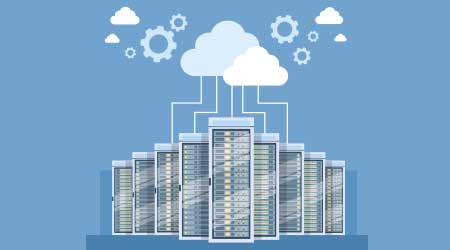The Facility Manager's Role in Colocation, Cloud, and Edge
The FM's role is critical for forecasting budgeting, managing assets, and making sure those assets are in the proper location.
Facility Managers and the Colo Environment
Ultimately, if the decision is made to move to a colo, what role does the facility manager have without an on-premise data center? At first glance, one might think there might not be a role for this position, since there isn’t an on-site physical space to manage. However, if the company decides that the cloud or colo is the best option to reach their business goals and objectives now and in the future, not everything goes away.
The facility manager, with help from IT, will be tasked with figuring out what equipment will still be supported in-house and what will be outsourced. The facility manager will still be the point person at the organization to oversee the remaining data center assets. This entails maintaining reliability equivalent to the existing on-premises data center, colo, or cloud solution. This should also be considered from a cost perspective when analyzing the total costs of moving to a colo.
The facility manager should also serve in an oversight/consulting role in the colo selection process. Their perspective on the functions and features of a purpose-built colocation facility could be helpful to a team making a decision to move to a specific colo.
Facility Manger and the Cloud
For companies weighing the cloud option, the key stakeholders must first determine what applications will reside in the cloud and what changes those migrations will make to storage, server, and computer platforms. After these questions are answered and load is migrated to the cloud (hopefully), the end result should be a data center load reduction. Typically, an organization does not employ an “all-or-nothing” strategy when it comes to cloud solution. Companies only move a portion of the assets, applications or storage need to the cloud. This reduces the load on the existing data center (colo or on-prem), but does not eliminate that load.
A cloud migration can recover space, power, and cooling in taxed physical data centers. When this occurs, the facility manager has the opportunity to reclaim vacated space for lab or office use and consolidate the data center. If the physical data center happens to be in a colo, reclaiming rack space and unused power distribution should be addressed in lease negotiations with the colo owner.
The facility manager should also keep in mind that load migration brings the potential for low-load conditions that could cause failure in some cooling systems. Facility managers must find a way to maintain reliability requirements in this environment.
Another challenge is that, when load gets migrated to a cloud-based solution, the facility manager must keep IT on task to actually eliminate the decommissioned servers. This is the only way for a facility manager to reclaim space, power, and cooling and might require migration of equipment to consolidate footprint in a room. This requires a good amount of work and planning.
Facility Manager and the Edge
There has been a lot of talk about edge computing in the last year. In its most basic level, edge computing allows data produced by a variety of sources — such as Internet of Things (IoT) devices, critical applications, manufacturing sensors, VR, AI, etc. — to be processed closer to the point of creation or demand instead of sending it to remote data centers or to the cloud, where latency can cause an issue in operation. The edge allows organizations to reduce latency and cost in the transaction of data processing.
Edge computing does not reduce the need for data center space. Rather it involves placement of smaller data centers across the organization — each with its own network, HVAC, conditioned power and security requirements, and most importantly reliability demands.
Edge computing expands the role of the facility manager and therefore requires facility manager input. The edge could mean more footprint for IT equipment, which ultimately involves facilities. Additionally, the “how” of deploying the edge rests in the facility manager’s hands: managing internal involvement in the placement of these smaller, but critical environments.
Impact on the Facility Manager
In the end, where an organization’s data is housed is only a small portion of the facility management role. The first step is to determine what the opportunities are for IT (cloud, colo, or edge computing) when deciding where data should be hosted. Determining what IT assets are required for each potential move, the facility manager must forecast for those assets and ensure the assets are in the proper location for the business requirements. The facility manager must help solidify budgets from cap-ex and op-ex to determine what to do with the reduced footprint. He or she also must play a key role in mapping out the “what happens” scenarios when load is reduced, eliminated, or moved to a new location. All of these decisions have schedule, budget, and operational impacts that need to be vetted through the lens of facilities, therefore this role is still very much relevant and needed no matter what route an organization takes for their data center needs.
Tim Kittila (tkittila@ptnet.com) is director, data center operations, Parallel Technologies.
Related Topics:














